#Heavy Duty Wiper Motor Market Share
Explore tagged Tumblr posts
Text
Leading Competitors And Growth Trends Heavy Duty Wiper Motor Market Top Players, Trends And Forecast To 2029B Hepworth, Valeo, Denso
The Heavy Duty Wiper Motor Market research delivers comprehensive research on the present stage of the market, covers market size with respect to assessment as sales volume, and provides a precise forecast of the market scenario over the estimated period. Also focuses on the product, application, manufacturers, suppliers, and regional segments of the market. Heavy Duty Wiper Motor report research highlights market driving factors, an overview of the market growth, industry size, and market share. Since this Heavy Duty Wiper Motor report depicts the constantly evolving needs of clients, vendors, and purchasers in different regions, it becomes simple to target specific products and generate large revenues in the global market.
“The Market For Heavy Duty Wiper Motor Market Is Expected to Reach Rise at A CAGR Of 5% During the Forecast Period.”
(Exclusive Offer: Flat 30% discount on this report)
Click Here to Get Free Sample PDF Copy of Latest Research on Heavy Duty Wiper Motor Market 2022 Before Purchase:
Top Key Players are covered in this report:
B Hepworth, Valeo, Denso, AutoTex, Marinco, West Marine, Boat Warehouse Australia, AM Equipment, Schmitt Marine, ROCA Industry, VETUS, WEXCO Industrie
On the Basis of Product, the Heavy Duty Wiper Motor Market Is Primarily Split Into
AC Motors
DC Motors
On the Basis of End Users/Application, This Report Covers
Ship
Train
Automobile
Others
The regions are further sub-divided into:
-North America (NA) – US, Canada, and Mexico
-Europe (EU) – UK, Germany, France, Italy, Russia, Spain & Rest of Europe
-Asia-Pacific (APAC) – China, India, Japan, South Korea, Australia & Rest of APAC
-Latin America (LA) – Brazil, Argentina, Peru, Chile & Rest of Latin America
-The Middle East and Africa (MEA) – Saudi Arabia, UAE, Israel, South Africa
Major Highlights of the Heavy Duty Wiper Motor Market report study:
A detailed look at the global Heavy Duty Wiper Motor Industry
The report analyzes the global Heavy Duty Wiper Motor market and provides its stakeholders with significant actionable insights
The report has considered all the major developments in the recent past, helping the users of the report with recent industry updates
The report study is expected to help the key decision-makers in the industry to assist them in the decision-making process
The study includes data on Heavy Duty Wiper Motor market intelligence, changing market dynamics, current and expected market trends, etc.
The report comprises an in-depth analysis of macroeconomic and microeconomic factors affecting the global Heavy Duty Wiper Motor market
Market Ecosystem and adoption across market regions
Major trends shaping the global Heavy Duty Wiper Motor market
Historical and forecast size of the Heavy Duty Wiper Motor market in terms of Revenue (USD Million)
SPECIAL OFFER: AVAIL UP TO 30% DISCOUNT ON THIS REPORT:
Market Segment Analysis:
The Heavy Duty Wiper Motor Report provides a primary review of the industry along with definitions, classifications, and enterprise chain shape. Market analysis is furnished for the worldwide markets which include improvement tendencies, hostile view evaluation, and key regions development. Development policies and plans are discussed in addition to manufacturing strategies and fee systems are also analyzed. This file additionally states import/export consumption, supply and demand, charge, sales and gross margins.
Browse Full Report at:
The Research covers the following objectives:
– To study and analyze the Global Heavy Duty Wiper Motor consumption by key regions/countries, product type and application, history data from 2016 to 2022, and forecast to 2028.
– To understand the structure of Heavy Duty Wiper Motor by identifying its various sub-segments.
– Focuses on the key global Heavy Duty Wiper Motor manufacturers, to define, describe and analyze the sales volume, value, market share, market competition landscape, Porter’s five forces analysis, SWOT analysis and development plans in the next few years.
– To analyze the Heavy Duty Wiper Motor with respect to individual growth trends, future prospects, and their contribution to the total market.
– To share detailed information about the key factors influencing the growth of the market (growth potential, opportunities, drivers, industry-specific challenges and risks).
– To project the consumption of Heavy Duty Wiper Motor submarkets, with respect to key regions (along with their respective key countries).
Report Customization:
Heavy Duty Wiper Motor, the report can be customized according to your business requirements as we recognize what our clients want, we have extended 25% customization at no additional cost to all our clients for any of our syndicated reports.
In addition to customization of our reports, we also offer fully tailored research solutions to our clients in all industries we track.
Our research and insights help our clients in identifying compatible business partners.
Note: All of the reports that we list have been tracking the impact of COVID-19 on the market. In doing this, both the upstream and downstream flow of the entire supply chain has been taken into account. In addition, where possible we will provide an additional COVID-19 update report/supplement to the report in Q3, please check with the sales team.
About us:
The Research Insights – A world leader in analysis, research and consulting that can help you renew your business and change your approach. With us you will learn to make decisions with fearlessness. We make sense of inconveniences, opportunities, circumstances, estimates and information using our experienced skills and verified methodologies. Our research reports will provide you with an exceptional experience of innovative solutions and results. We have effectively led companies around the world with our market research reports and are in an excellent position to lead digital transformations. Therefore, we create greater value for clients by presenting advanced opportunities in the global market.
Contact Us:
Robin
Sales Manager
Contact number: + 91-996-067-0000
[email protected] https://www.theresearchinsights.com
#Heavy Duty Wiper Motor Market#Heavy Duty Wiper Motor Market 2022#Heavy Duty Wiper Motor Market Analysis#Heavy Duty Wiper Motor Market Cagr#Heavy Duty Wiper Motor Market Forecast#Heavy Duty Wiper Motor Market Growth#Heavy Duty Wiper Motor Market Industry#Heavy Duty Wiper Motor Market Key Players#Heavy Duty Wiper Motor Market Opportunity#Heavy Duty Wiper Motor Market Report#Heavy Duty Wiper Motor Market Research#Heavy Duty Wiper Motor Market Scope#Heavy Duty Wiper Motor Market Share#Heavy Duty Wiper Motor Market Size#Heavy Duty Wiper Motor Market Technology#Heavy Duty Wiper Motor Market Trends
0 notes
Text
Volvo and the Future of Trucking Industry
Trucking industry plays a huge role in moving large quantities of raw materials, works in process and finished goods from manufacturing plants to retail distribution centers. Trucks are also used in construction industry and freight, transportation and warehousing industries. Trucking industry, simply put, is the backbone of supply chain.
The demand for trucks, truck parts and spare parts continuously increase as the demand for numerous products increase as well. Truck spare parts distributor companies have a huge inventory of items comprising genuine OEM and replacement parts that are sourced from different parts of the globe.
Today, the leading truck brands used by many are UD Nissan and Volvo. UD or Uniflow Diesel Engine but is now marketed as Ultimate Dependability is owned by a Japanese company responsible for the manufacturing of diesel trucks. These UD Nissan trucks are known for its five distinct functionalities such as drivability, fuel efficiency, safety, productivity and uptime. UD Nissan diesel parts such as oil filters, fuel filters, brake drum, brake linings, brake chambers, fan belts, thermostats, torque rod bushings, wiper blades, starter motor, clutch disc, clutches, clutch cover, cylinder liner kit, gasket kits, expanders, wheel cylinders, alternators, turbo charger, steering gear box, air compressor and many others can be purchased from different truck spare parts distributors. Since 2007, UD Nissan Diesel trucks have become a wholly owned subsidiary of the Volvo Group.
Meanwhile, Volvo trucks has been the second largest manufacturer of heavy-duty trucks that originated in Sweden. To date, these trucks are sold and serviced in more than 140 countries all over the world. Volvo trucks is commonly known for offering the most fuel-efficient trucks you can buy. Also, it boosts productivity, keeps you safe and dramatically improves the driving experience. The Volvo FM is designed to be flexible in that its range is similar with the FH range. FM and FH range share a number of Volvo truck spare parts, thus decreasing production and development costs while improving built efficiency and quality of Volvo truck parts.
With the merging of these two largest manufacturers of heavy-duty trucks, one might say that they now play an important role in global production. Because of growth in major markets such as Italy, Spain, France and Germany, truck sales have increased again after the economic downturn. In European Union, freights are commonly transported by heavy-duty vehicles on the road.
The future of trucking industry has yet to be discovered. However, the Volvo Group is looking at three strong trends namely automated driving, electromobility and connectivity. These three trends have the potential to impact mobility of goods and other services. With these, the Volvo Group is currently on the works with its innovation in the form of self-driving FMS truck that is intended to create greater business advantages for customers. In Brazil, the Group has been investigating whether self-driving trucks can make an important contribution to the sugarcane farming. Another innovation of the Volvo Group is the autonomous refuse truck that is designed to make driving safer.
0 notes
Photo
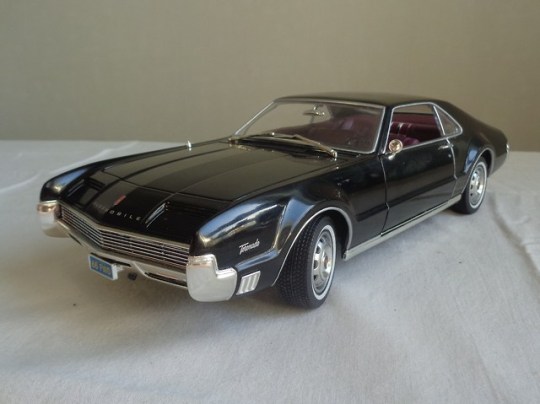
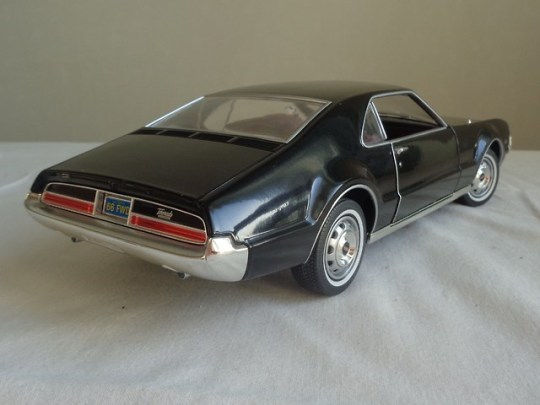
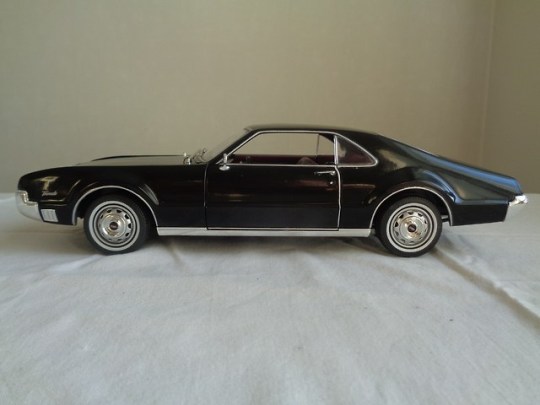
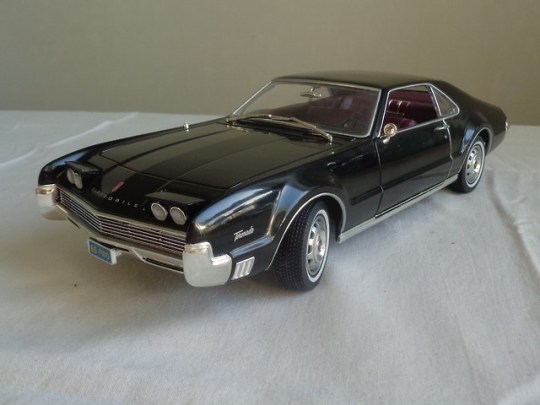
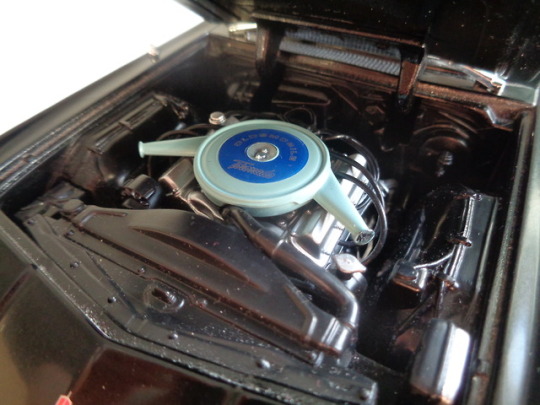
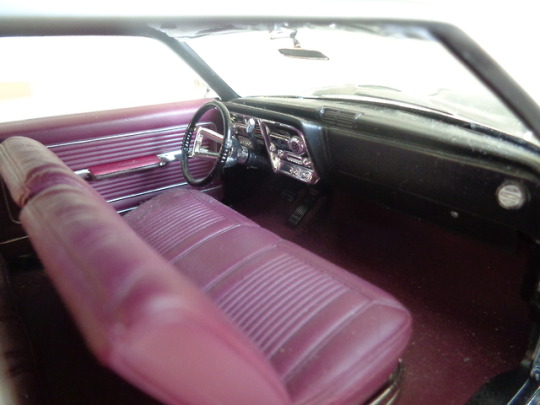
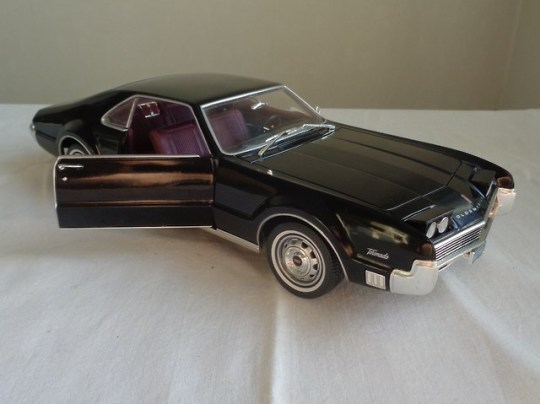
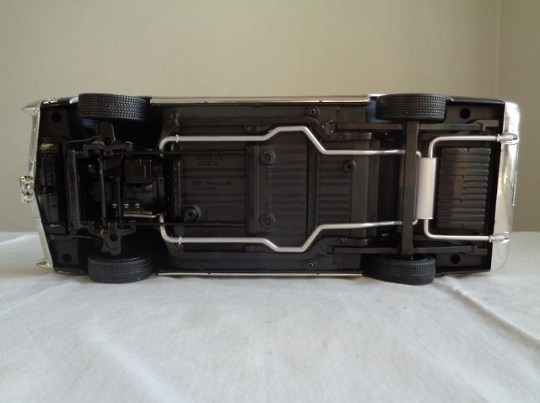
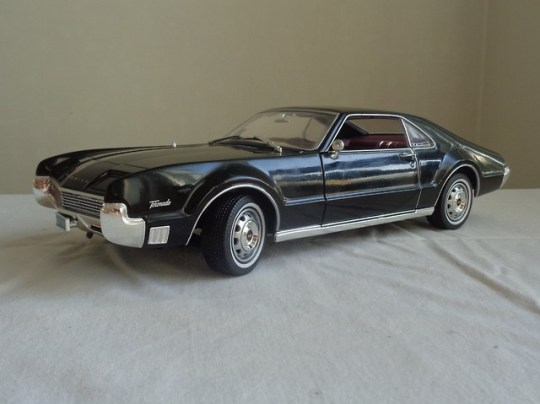
1966 Oldsmobile Toronado (Yat Ming Road Signature 1:18)
Front-wheel drive powertrains are today the most common way to transfer power to the driving wheels of a car. With its greater efficiency, its elimination of the need for additional heavy components needed to move power from the engine to the opposite end of the car, and its increase in traction due to being coupled with the car's heaviest component (the engine), it's no surprise that today's preference for economically spaced compacts would much prefer lumping all of these necessary parts as closely together as possible. However, it did not begin thus and the initial employment of this drivetrain system was slow to take root outside of the racing circuits, its first truly successful mass-market application not really appearing until the 1930s when the Citroën Traction Avant came about - and which was only further solidified by the appearance of the even more popular 2CV after the war. But it wasn't really until the 1970s, with further development of the FWD mechanism over the last decade-and-a-half and the car industry moving toward increasingly compact solutions, that the usage of the layout finally began to show its future dominance as the primary way of propelling our vehicles forward.
But out of all the major car-producing countries, it was the largest that was perhaps the slowest to embrace this particular approach. The car industry in the United States was for decades almost synonymous in people's minds with its traditional, rear-wheel driven land yachts and brawny muscle cars kicking up a hail of gravel as their powerful V8s launched them forward down the road, an image so powerful that any other power train was seen almost absurd outside of being a novelty. This probably wasn't helped as the previous mass-produced American front-wheel drive cars hadn't exactly lit the country on fire as the Cord L-29 of 1929 and the more famous Cord 810/812 of 1936-37 hadn't really been such great sales successes despite their eye-popping styling (though this was largely in spite of the drive system itself and more connected with the Great Depression eating into company profits that eventually drove the Cord empire into bankruptcy). However, a significant change to this was to come when General Motors unveiled their brand-new Oldsmobile Toronado in the October of 1965.
Oldsmobile had already been working on a front-wheel drive system since 1958 under engineer John Beltz, which was originally devised for the intermediate F-85 line. However, the drive's experimental nature led to it being pushed more toward a pricier and thus larger car, despite GM chief stylist Bill Mitchell and Oldsmobile staff pushing for the smaller intermediate A-Body shell. Citing cost reasons, the larger E-Body, which the new Olds was to share with the redesigned Buick Riviera, was chosen instead, while the general styling ideas were adapted from a design painting made by David North in 1962 for a compact sports car never intended for production. Due to the car's unusual build qualities, the car required some unorthodox engineering solutions to make it work. Because the engine bay remained the same size as on a regular RWD car, the conventional seven-litre 425 cid Super Rocket V8 with performance boosting required a significant redesign of its general layout.
This was achieved through the so-called Unitized Power Package, or UPP, which involved fitting its new heavy-duty Turbo-Hydramatic THM-425 three-speed automatic transmission into the same space as the engine itself, resulting in a design where the torque converter was placed separately behind the engine, while the planetary gearset was situated under the left-side cylinder row connected by a two-inch chain called the Hy-Vo. Thus the car's entire power source could be crammed into the relatively small engine bay, while also allowing for the floor of the interior to remain completely flat, allowing greater passenger comfort on the front sofaseat. Likewise, conventional coil springs were replaced in the front of the car with torsion bars to allow for the FWD to fit in, while the rear was supported by leaf springs connected to GM's first sub-frame construction that carried the powertrain, front suspension and floorpan for greater isolation of road and engine harshness. All this, combined with its striking outer looks that took some inspiration from the aforementioned Cord 810 (pop-up headlights, similar wheel covers, wide horizontal lists in the grille), certainly made the car an eye-catcher and caused a respectable 40,963 units to be produced in its first model year, though sales figures quickly went down in subsequent years until its second-generation redesign in 1971.
The car did have its issues typical of American cars of the period. It was prone to understeer and functioned better when taken to paved roads that rather went in a straight line over curvy lanes requiring greater manoeuvring. Likewise, the power steering is generally rather vague and stopping the car was relegated to four rather inadequate enlarged drums all around, despite the car weighing a hefty 2050 kg (front disc brakes became optional in 1967). Not to mention the very long hood and sloping front end made it hard to recognise the car's dimensions. However, the engine and transmission package was very smooth and the high-powered V8 produced plenty of power to propel the car from 0-100 km/h in a fairly good 9,5 seconds (official test records showed an even more blistering 7,5!), with a recorded top speed of 217 km/h. It even went on to win several awards, such as Motor Trend's Car of the Year, and finished third in the European Car of the Year contest, a rare feat for an American car. The FWD UPP system was similarly later implemented on the 1967 E-Body Cadillac Eldorado - though this one employing Cadillac's own standard 429 V8 as a power plant - a characteristic that was to remain a regular feature throughout the Eldorado's existence.
On the scale model end, the Toronado isn't exactly widely represented, with the only ones I've seen being a rather crummy 1:43 Spark model (possibly a very early model considering how clunky it looks in comparison to the cars they make today), a couple of rather crude Matchbox-sized ones, and this large 1:18 scale car from Chinese manufacturer Yat Ming's premium Road Signature series. Now, Yat Ming is one of those brands that doesn’t exactly fill one with thoughts of quality craftsmanship, and indeed this model has its issues as well. However, despite this, there is certainly a rather good amount of detail bestowed upon this example that cashes in its credentials of being a more premium model than their regular fare. For one, the car's general appearance is spot on, with perfectly executed dimensions and chrome parts that fit quite well together. Some trim pieces, such as the windowsills and strips around the flared wheel openings are painted silver, but this isn't necessarily a negative as at least the model doesn’t suffer from oversized trim pieces not necessarily fitting together all too well the way models of this price range have a tendency to do, something that is slightly evidenced on this car's windshield wipers as well. The model is available in dark red and gold, both with black interiors, as well as black with a burgundy interior, offering good paint application if not necessarily stellar.
The major notable issue is the grille, which is left as just a straight chromed affair, necessitating the use of some black marker or paint to detail the grille openings for better realism. A nice feature, though, are the retractable headlights, which can be lifted by using a lever situated under the car just behind the front bumper. The rather ugly-looking stubs behind the lights, though, may require some additional detailing as I have done. The trunk doesn’t open, but the hood and doors do. The doors are hinged realistically to not hang separately from the body on large doglegs, but the hinges themselves are very flimsy affairs that require delicacy when operating (my model's driver's side door is so wedged in that I can't open it fully and don't want to force it open out of fear of destroying the door). The interior looks a bit plasticky, but not bad by any means, with the "slot machine" dash consisting of part chrome parts, part sticker decals, while the backs of the front seats tilt forward. The engine compartment is very nicely detailed, with its use of colour, hoses, and wiring giving it a realistic edge, even if missing that last bit of detail of not having various warning stickers seen in more high end models (though there's nothing stopping you from getting aftermarket decals if you so wish).
The tires are a little flimsy, but don’t feel as if they are about to fall off, so it's still acceptable. The bottom is also acceptable with its separate exhaust manifolds, working steering, and good enough detailing of the floorpan to not cause any great sense of disappointment there. The model is relatively light for its size and sturdy enough to not feel particularly weakly put together, but isn't really one for toy use, particularly with the finicky doors. Ultimately, what you get with this scale model is a very fine representation of the 1966 Oldsmobile Toronado that for all intents and purposes is a very satisfactory reproduction of the real car. Even if it does in parts feel somewhat on the cheaper side, at around €40 it's still pretty good value for money. Truly demanding collectors may want to steer the other way, but anybody else will likely be perfectly satisfied with the level of quality seen here.
Final score: 4/5.
1 note
·
View note